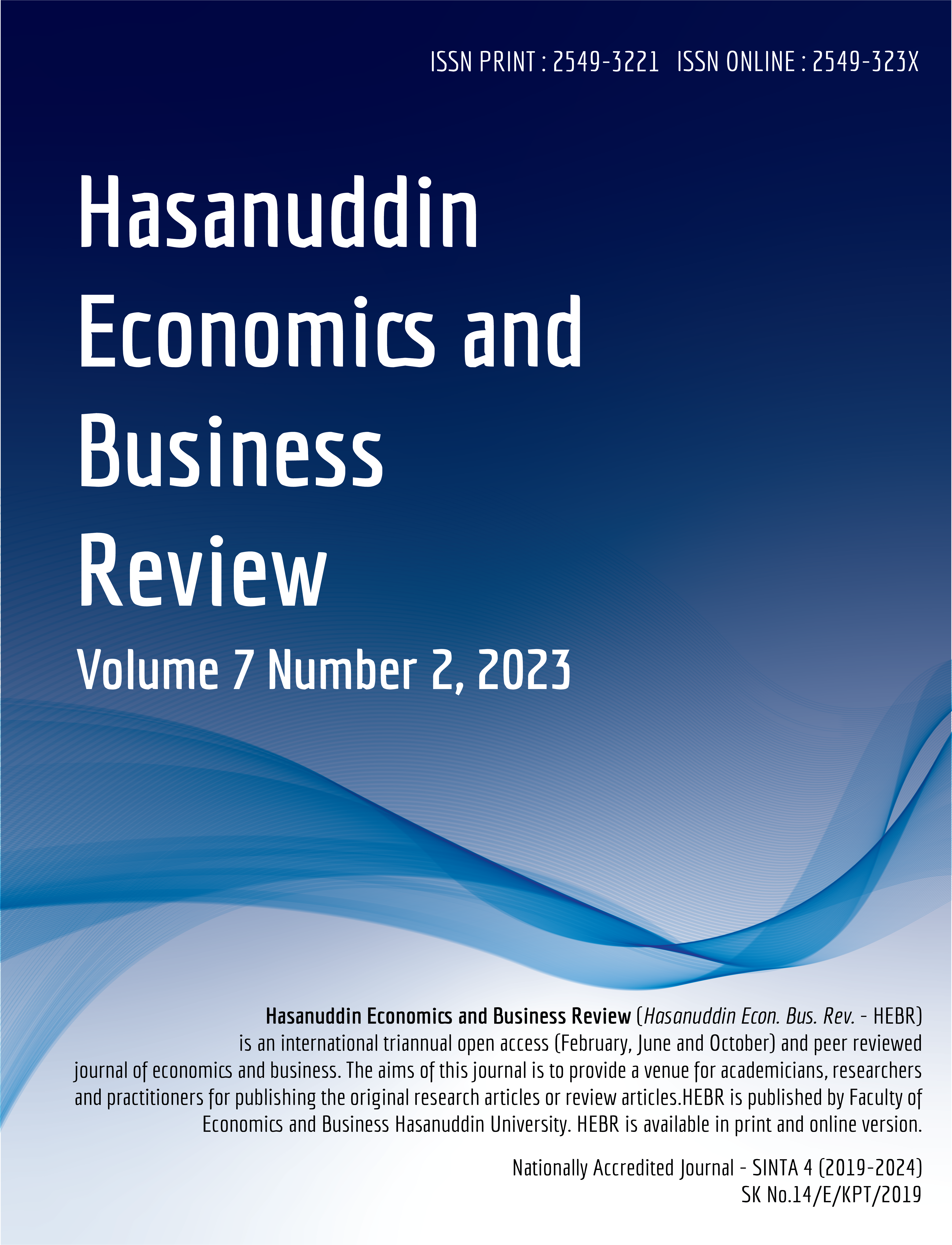Abstract
This study aims to determine the extent of the role of happiness at work in improving employee performance in the head office of BKKBN, both directly and indirectly. The approach of research uses quantitative methods. Primary data were collected by distributing questionnaires. Analysis of data processed by descriptive analysis and inferential analysis using the Structural Equation Model through SmartPLS software to 200 respondents data. The results showed that happiness at work had not directly effect employee performance, but when the relationship was mediated by work motivation there was a positive and significant effect between happiness at work on employee performance.References
Achor, S., 2010. The Happiness Advantage: The Seven Principles of Positive Psychology That Fuel Success and Performance at Work. Crown Business/Random House.
Aguinis, H., 2009. Performance management (2nd ed.). Prentice-Hall/Pearson Education.
Amabile, T. M., Hill, K. G., Hennessey, B. A., Tighe, E. M., 1994. The Work Preference Inventory: Assessing Intrinsic and Extrinsic Motivational Orientations. Journal of Personality and Social Psychology 66 (5), 950–967.
URL: https://psycnet.apa.org/buy/1994-35880-001
Aprianto, C., 2016. Pengaruh Motivasi Kerja Terhadap Kepuasan Kerja serta Dampaknya Terhadap Kinerja Karyawan di PT.X. Jurnal Ilmu Manajemen 4 (2).
URL: https://jurnalmahasiswa.unesa.ac.id/index.php/jim/article/view/17516
Bataineh, K. A., 2019. Impact of Work-Life Balance, Happiness at work, on
Employee Performance. International Business Research 12 (2).
URL: http://www.ccsenet.org/journal/index.php/ibr/
article/download/0/0/38180/38688
Bungin, B., 2005. Metode Penelitian Kuantitatif. Prenadamedia, Jakarta.
Byars, L., Rue, L., 2011. Human Resource Management. McGraw-Hill, New
York.
Carr, J. Z., Schmidt, A. M., Ford, J. K., DeShon, R. P., 09 2003. Climate Perceptions Matter: A Meta-Analytic Path Analysis Relating Molar Climate,
Cognitive and Affective States, and Individual Level Work Outcomes. Journal of Applied Psychology 88, 605–619.
URL: https://doi.org/10.1037/0021-9010.88.4.605
Cooper, D. R., Schindler, P. S., 2014. Business Research Methods, 12th Edition.
McGraw-Hill, New York.
Efendi, R., Rifa’i, M. N., Bahrun, K., Milla, H., 2020. The Mediation of Work
Motivation on the Effects of Work Discipline and Compensation on Performance Batik MSMEs Employees in Yogyakarta City, Indonesia. International Journal of Multicultural and Multireligious Understanding 7 (1).
URL: https://ijmmu.com/index.php/ijmmu/article/view/1375
Garcia, C. R., 2019. Happiness at work: Measurement Scale Validation. Journal
of Business Management 59 (5), 327–340.
URL: https://doi.org/10.1590/s0034-759020190503
Gibson, 1995. Organisasi dan Manajemen.
Hair, J. F., e., 2014. Multivariate Data Analysis, Seventh Edition. En: Pearson
Education Limited.
Hulland, J., 1999. Use of Partial Least Squares (PLS) in Strategic Management
Research: A Review of Four Recent Studies. Strategic Management Journal
(2), 195–204.
URL: https://doi.org/10.1002/(SICI)1097-0266(199902)20:2%
C195::AID-SMJ13%3E3.0.CO;2-7
KemenPPPA, 2018. The Ministry of Women’s Empowerment and Child Protection and The Central Bureau of Statistics.
Lee, C., Keyes, C., Hysom, S., Lupo, K., 2000. The positive organization:
Leadership legitimacy, employee well-being, and the bottom line. The
Psychologist-Manager Journal 4, 143–153.
URL: https://doi.org/10.1037.h0095888
Lin, Y.-C., Yu, C., Yin, C.-C., 2014. The effects of positive affect, person-job
fit, and well-being on job performance. Social Behavior and Personality: an
International Journal 42 (9), 1537–1547.
URL: https://doi.org/10.2224/sbp.2014.42.9.1537
Moore, M. G., 2007. The Theory of Transactional Distance.
Pryce-Jones, J., 2010. Happiness at work: Maximizing Your Psychological
Capital For Success. Wiley-Blackwell.
Rego, A., Cunha, M. P., 2008. Authentizotic Climates and Employee Happiness: Pathways to Individual Performance? Journal of Business Research
, 739–752.
URL: https://doi.org/10.1016/j.jbusres.2007.08.003
Robbins, S. P., Judge, T. A., 2012. Organizational Behavior, 15th Edition. Pearson.
Schaffer, B., 2015. A legifjabb titanok. Book Kiad ´ o, Hungary. ´
Spector, P. E., 1997. Job Satisfaction: Application, Assessment, Causes, and
Consequences. Sage Publication.
Tenenhaus, M., Amato, S., Vinzi, V., 2004. A Global Goodness-of-Fit Index for
PLS Structural Equation Modelling.
URL: https://www.scirp.org/(S(351jmbntvnsjt1aadkposzje))/
reference/ReferencesPapers.aspx?ReferenceID=1960154
Ulrich, D., 1998. A New Mandate for Human Resources. Harvard Business
Review.
URL: https://hbr.org/1998/01/a-new-mandate-for-human-resources
Wong, K., 2013. Partial least square structural equation modeling (pls-sem)
techniques using smartpls. Marketing Bulletin 24 (1).
URL: https://www.researchgate.net/profile/Arumugam_
Raman/post/What_is_the_interpretation_of_SmartPLs/
attachment/59d646c2c49f478072eae9ca/AS:273837248188417@
/download/Smartpls.pdf
C¸ etin, F., Askun Celik, D., 2018. The Effect of Occupational Self-Efficacy on Work Performance Through Intrinsic Work Motivation. Management Research Review 41 (3).
Authors who publish in this journal agree to the following terms:
- The journal holds the copyright for each article published with work licensed simultaneously under a Creative Commons Attribution 4.0 International License, which allows others to share the work with an acknowledgement of the authorship and early publication of the work in this journal.
- Authors must agree to the copyright transfer agreement by checking the Copyright Notice column at the initial stage when submitting the article.

